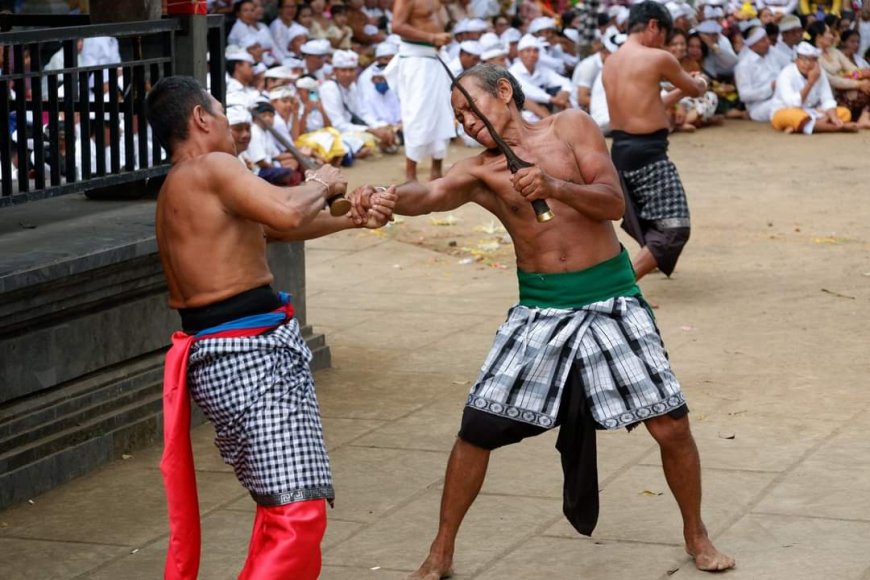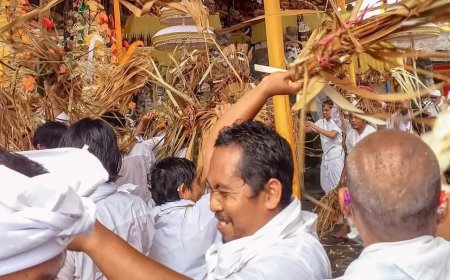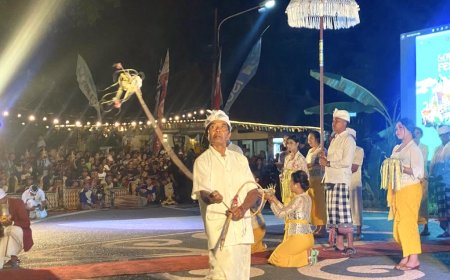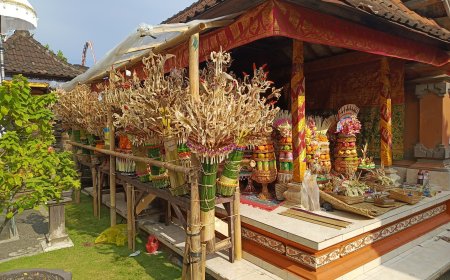Daratan, Dance of Piercing the Body with a Kris
Indonesia is home to various unique customs, and in Bali, the community diligently preserves an iconic tradition eagerly anticipated by both local and international tourists. This tradition involves a keris being thrust into different parts of the body by a dancer who is in a trance.

During religious rituals at the temple (pura) in Bali, we are often treated to captivating dances that evoke a mix of awe and admiration. These dances illustrate how the power of the gods flows into individuals who are in a trance. The Balinese people have several sacred dances performed with utmost devotion. Typically, these sacred dances are presented by individuals experiencing a trance during religious ceremonies. Examples of transformative dances include the Sanghyang Dance, Kecak Dance, Barong vs Rangda Dance, Daratan Dance, and others. Each region in Bali has its unique variations of sacred dances.
One such dance involves the use of a keris to pierce the dancer's chest or abdomen. This type of dance is known as Daratan, Ngurek, Ngunying, or has specific names depending on the village, district, or regency. Daratan/Ngurek Dance represents one of the sacred dance forms rich in magical elements on the island of Bali. This tradition is commonly practiced by communities in various regencies such as Karangasem, Badung, Gianyar, Buleleng, and several other villages.
 Daratan Dance ( Source : Author's Collection )
Daratan Dance ( Source : Author's Collection )
This dance is also known as the Dewayu dance. The term "Daratan" is derived from "Narat," which carries the meaning of trance or possession. Sometimes, this dance is referred to as "Ngurek," alluding to the scene of self-piercing. The Daratan Dance performance generally takes place in the evening, around 8 o'clock, reaching its climax during religious ceremonies such as temple inaugurations or temple anniversary celebrations (Piodalan). Before the dance begins, all participants engage in prayers for safety, followed by a communal dinner. Subsequently, a gamelan music ensemble plays traditional Balinese instruments.
A group of dancers (4-6 individuals) showcase dance movements while carrying Canang (small offerings). The ceremonial leader, called Pemangku, recites mantras to purify the keris that will be used in the performance. It is essential to note that the Daratan Dance cannot be learned conventionally as the selection of dancers depends on the will of gods and goddesses. The Balinese community refers to it as "Sumbuhan," even six-year-old children can be chosen to perform the Daratan dance. As the power of gods and ancestors flows into their beings, a trance occurs, and the Pemangku presents the purified keris.
This dance involves the act of thrusting a keris into the chest, and some dancers even engage in extreme actions by thrusting the keris into their throat, nose, or eyes, as if they want to harm their own bodies. However, thanks to the power of the gods, they always emerge unharmed. The audience is requested to cheer and applaud to satisfy the dancers. Some performers showcase the dance for 15 minutes, an hour, or even two hours continuously, depending on the strength of the gods and ancestors flowing into them.































































